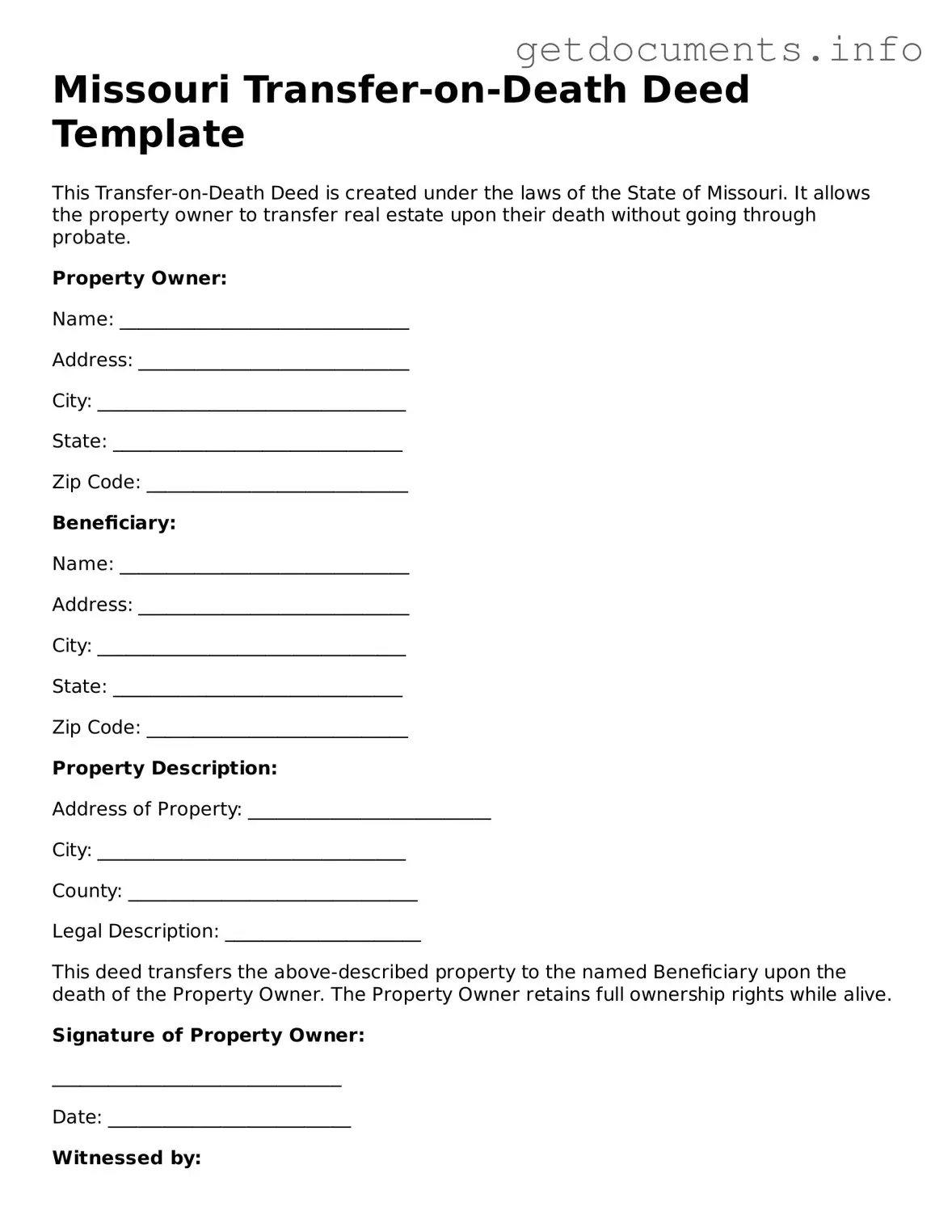Free Transfer-on-Death Deed Template for Missouri
The Missouri Transfer-on-Death Deed form is a legal document that allows property owners to transfer their real estate to designated beneficiaries upon their death, avoiding the often lengthy probate process. This form provides a simple and effective way to ensure that your property goes directly to your loved ones without unnecessary complications. Ready to take the next step? Fill out the form by clicking the button below.
Access Transfer-on-Death Deed Editor
